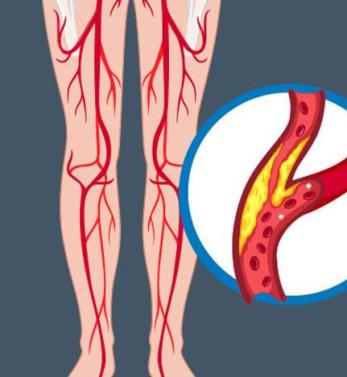

Peripheral disease, also known as arterial disease, usually occurs in the arteries leading to the legs. It is the condition of narrowing of the vessels and not getting enough blood to the area, often due to the protrusions that contain cholesterol in the layers of the arterial wall and extend inside the vessel.
In addition to these, narrowing of the veins can be seen due to diseases that cause inflammation of the vascular wall, rheumatic and immune system diseases, congenital diseases, coagulation in the veins.
What Increases Peripheral Artery Risk?
Peripheral artery; It is more common in people who have had long-term hypertension and lipid metabolism disorder, diabetes, genetic atherosclerosis, gout, PDH coronary artery disease, heart attack or temporary / permanent stroke. In addition, less movement, excessive consumption of alcohol and tobacco products, fatty and irregular diet are among the factors that increase the risk of peripheral arteries.
What Are the Symptoms of Peripheral Artery?
Pain is often observed in people with peripheral artery disease, as in most cardiovascular diseases. These pains occur in a variety of conditions and forms. The pain, which usually appears in the form of cramps in the calf region, occurs after walking a certain distance in people with peripheral artery disease, and as the disease progresses, the distance that the person can walk becomes shorter. This pain is ignored by the patients as it goes away after a few minutes of rest. If the disease progresses and the doctor is not consulted, the patient is at risk of being amputated. For this reason, it is of great importance that patients who notice the symptoms begin treatment immediately.
Diagnosis of Peripheral Artery Disease
Peripheral arterial disease; It can be confused with various diseases such as herniated disc, aneurysm, venous insufficiency, tumor. For this reason, correct examinations should be performed at the diagnosis stage and the results should be evaluated in detail by specialist physicians.
After taking the patient's history, a Doppler ultrasound examination is usually performed, followed by computed tomography angiography, magnetic resonance angiography, or classical angiography may be required to locate the obstruction. After the examinations, the treatment methods to be applied are determined and the treatment process of the patient is started.
Medical Treatment Methods in Peripheral Arterial Disease
In the treatment of peripheral arterial disease, first of all, action is taken to reduce risk factors. In this process, patients are asked to do walking exercises and to use medication regularly. If necessary, one or more non-surgical procedures can be applied to widen the vessel. These;Interventional radiological treatment Pta (Balloon angioplasty), pta + stent implantation, thrombolytic (clot-dissolving therapy),
Balloon angioplasty
It is stent implantation with balloon angioplasty.
Applications performed with less risk without opening large incisions are performed under local anesthesia. The patient's risk of being amputated is greatly reduced.
Surgical Treatment Methods in Peripheral Arterial Disease
Endarterectomy or bypass operations are performed when deemed necessary in the treatment of Peripheral Artery disease. Constricting and obstructing plaques are cleared by endarectomy; In the bypass operation, the open upper and lower parts of the occluded vein are combined with a synthetic vein or a vein taken from the patient's own body.